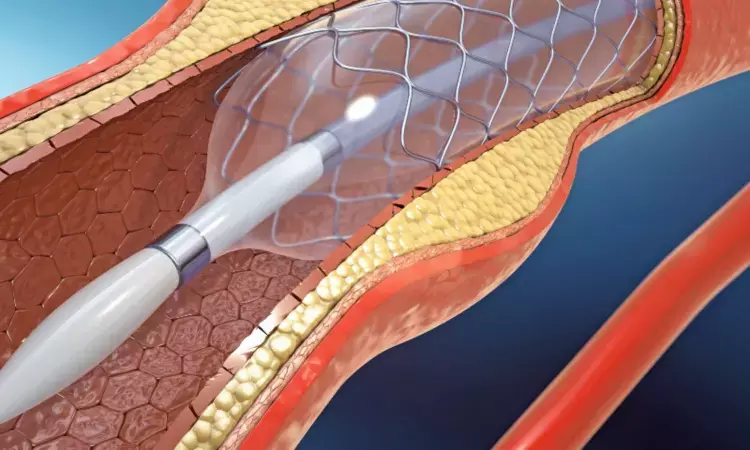- Home
- Medical news & Guidelines
- Anesthesiology
- Cardiology and CTVS
- Critical Care
- Dentistry
- Dermatology
- Diabetes and Endocrinology
- ENT
- Gastroenterology
- Medicine
- Nephrology
- Neurology
- Obstretics-Gynaecology
- Oncology
- Ophthalmology
- Orthopaedics
- Pediatrics-Neonatology
- Psychiatry
- Pulmonology
- Radiology
- Surgery
- Urology
- Laboratory Medicine
- Diet
- Nursing
- Paramedical
- Physiotherapy
- Health news
- Fact Check
- Bone Health Fact Check
- Brain Health Fact Check
- Cancer Related Fact Check
- Child Care Fact Check
- Dental and oral health fact check
- Diabetes and metabolic health fact check
- Diet and Nutrition Fact Check
- Eye and ENT Care Fact Check
- Fitness fact check
- Gut health fact check
- Heart health fact check
- Kidney health fact check
- Medical education fact check
- Men's health fact check
- Respiratory fact check
- Skin and hair care fact check
- Vaccine and Immunization fact check
- Women's health fact check
- AYUSH
- State News
- Andaman and Nicobar Islands
- Andhra Pradesh
- Arunachal Pradesh
- Assam
- Bihar
- Chandigarh
- Chattisgarh
- Dadra and Nagar Haveli
- Daman and Diu
- Delhi
- Goa
- Gujarat
- Haryana
- Himachal Pradesh
- Jammu & Kashmir
- Jharkhand
- Karnataka
- Kerala
- Ladakh
- Lakshadweep
- Madhya Pradesh
- Maharashtra
- Manipur
- Meghalaya
- Mizoram
- Nagaland
- Odisha
- Puducherry
- Punjab
- Rajasthan
- Sikkim
- Tamil Nadu
- Telangana
- Tripura
- Uttar Pradesh
- Uttrakhand
- West Bengal
- Medical Education
- Industry
Hemodialysis Patients Face Higher Restenosis Risk After DCB Therapy, But Limb Salvage Remains High: POPCORN Registry

Japan: Data from the real-world POPCORN registry has revealed that peripheral artery disease (PAD) patients on hemodialysis experience worse vessel patency after drug-coated balloon (DCB) interventions compared to non-dialysis patients. However, 3-year limb salvage rates remain high, exceeding 90%.
The findings, published in JACC: Cardiovascular Interventions by Yasutaka Yamauchi of the Cardiovascular Center, Takatsu General Hospital, Kawasaki, and colleagues, suggest important insights into long-term outcomes of DCB therapy in a high-risk population that has traditionally been underrepresented in large-scale vascular studies.
The study analyzed data from a prospective, multicenter registry that included patients treated with DCBs—either Lutonix or IN.PACT Admiral—for femoropopliteal artery disease between March 2018 and December 2019. Of the 3,165 lesions treated, 991 were in patients undergoing hemodialysis. The primary outcome of interest was freedom from restenosis over three years.
The study led to the following findings:
- After propensity score matching, the 1-year freedom from restenosis rate was 82.2% in the hemodialysis group and 85.8% in the non-dialysis group.
- At three years, freedom from restenosis declined to 61.9% in hemodialysis patients and 66.3% in those not on dialysis.
- Restenosis outcomes consistently favored patients not undergoing dialysis.
- Risk factors linked to poorer vessel patency in the hemodialysis group included the absence of below-the-knee runoff, prior endovascular therapy, popliteal artery lesions, severe vascular calcification, use of the Lutonix balloon, and severe dissection after the procedure.
- In the hemodialysis group, restenosis was observed in 363 lesions during a median follow-up of 16.2 months.
- Despite the higher restenosis rates, over 90% of hemodialysis patients achieved limb salvage within three years.
- The high limb preservation rate supports the role of DCB therapy as an effective option, even in complex hemodialysis patients.
- Hemodialysis patients were generally younger (average age 72 years) compared to non-dialysis patients (76 years).
- In the hemodialysis group, there was a higher prevalence of diabetes and chronic limb-threatening ischemia.
- These underlying conditions may have contributed to the increased complexity and poorer patency outcomes observed in patients on dialysis.
The authors wrote, "DCB endovascular therapy represents a viable and effective treatment option for managing femoropopliteal lesions in patients undergoing hemodialysis. While the durability of vessel patency may be somewhat reduced in this high-risk group, the consistently high rates of limb preservation highlight its clinical value."
They emphasize the importance of adopting a tailored approach to endovascular care—one that takes into account specific anatomical and procedural factors—to optimize long-term outcomes in patients on dialysis.
Reference:
Yamauchi, Y, Takahara, M, Soga, Y. et al. Vessel Patency After Femoropopliteal Drug-Coated Balloon Therapy in Patients on Hemodialysis. J Am Coll Cardiol Intv. 2025 Jul, 18 (13) 1660–1670. https://doi.org/10.1016/j.jcin.2025.05.001
Dr Kamal Kant Kohli-MBBS, DTCD- a chest specialist with more than 30 years of practice and a flair for writing clinical articles, Dr Kamal Kant Kohli joined Medical Dialogues as a Chief Editor of Medical News. Besides writing articles, as an editor, he proofreads and verifies all the medical content published on Medical Dialogues including those coming from journals, studies,medical conferences,guidelines etc. Email: drkohli@medicaldialogues.in. Contact no. 011-43720751


